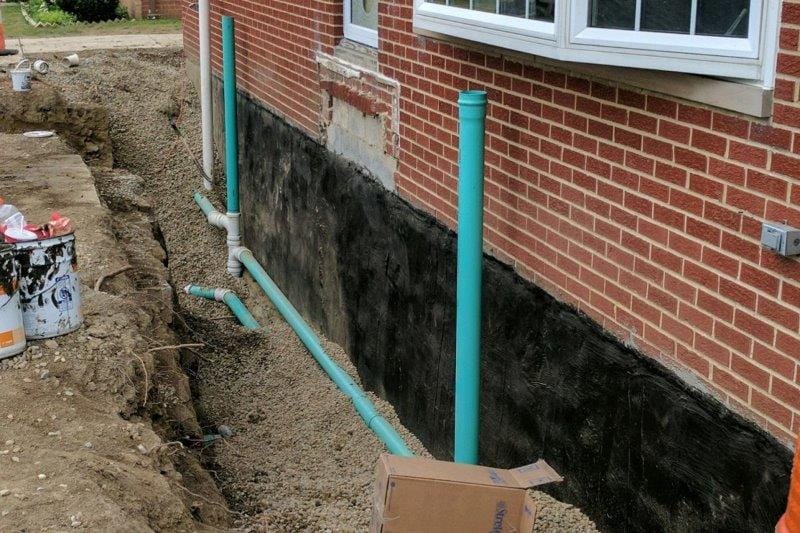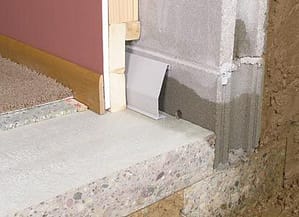How Best Basement Waterproofing can Save You Time, Stress, and Money.
Table of ContentsThe Definitive Guide for Best Basement WaterproofingSee This Report on Best Basement WaterproofingThe 25-Second Trick For Best Basement WaterproofingThe Ultimate Guide To Best Basement Waterproofing
What creates water damage concerns in your cellar? Here are a couple of points to seek: when the foundation of your home is compromised, water is very great at creeping in between tiny fractures and gaps and triggering damage. Pipelines that line the within your wall surfaces are just one example of where water damages can happen.The dirt and ground of your home is really crucial. If there is way too much water bordering your home, however, it can push the dirt into your home and trigger the seals of your cellar to become jeopardized. when you see excess water in areas where it ought to not be, that is an extremely excellent indication that you have an issue.
Concrete waterproofing layers are cement-like; once completely dry, they stick completely to concrete and stonework wall surfaces. You use the covering with a hefty brush made with bristles swirled during application for an eye-catching, completed appearance. Nevertheless, concrete water resistant layers can't be put on previously painted surfaces Silicate-based concrete sealants, additionally recognized as densifiers, are also suitable only for wall surfaces that haven't been repainted or secured.
The Ultimate Guide To Best Basement Waterproofing
Because these are passing through sealers, they can't exfoliate or peel, and you can have paint used over them. The American Eagle group might find a lot more complex causes for your dampness issues; there are added options available. Plastic sheets and panels could be combined with indoor basement water drainage systems. They don't quit water from getting via the wall, yet they do stop it from messing up points in the basement.
A sump pump is needed to relocate water out of your basement. In order to effectively suggest a solution for your wet cellar, call American Eagle for a no-obligation go to. Our technicians will certainly have the ability to discuss which remedies are options for your home. Why should you waterproof your basement? Below are a few things the specialists can set up to aid the waterproofing process: this is created for the wall surfaces of your basement.

Basement waterproofing is a terrific method to obtain ahead of potential water damage that may come your means.
Indicators on Best Basement Waterproofing You Need To Know
When it concerns safeguarding your home, one of the most vital steps you can take is basement waterproofing. A dry basement not only makes certain a secure and healthy and balanced environment for you and your family members, yet it likewise helps to stop costly water damage and mold and mildew growth. In this blog article, we will certainly imp source talk about the significance of cellar waterproofing, the advantages it offers, and how you can set about protecting your space.
When it pertains to cellar waterproofing, there are several approaches that can be used to maintain water out of your area. These include indoor sealers, exterior waterproofing membrane layers, and drainage systems. The finest approach for your cellar will depend upon factors such as the level of water breach, the condition of your foundation, and your spending plan.
To conclude, basement waterproofing is a crucial action in securing your home from water damages, mold and mildew growth, and other problems. By spending in basement waterproofing, you can guarantee that your area stays completely dry, risk-free, and healthy and balanced for you and your family. Not only does basement waterproofing supply comfort and protection for your home, but it can likewise boost its worth and conserve you cash on power expenses in the future.
Everything about Best Basement Waterproofing
Interior sealers are a kind of basement waterproofing method that involves applying a sealant to the inside of the cellar wall surfaces and floors. Water can permeate right into a cellar through fractures, spaces, or permeable concrete, especially in areas where there is high groundwater or inadequate drain. This can cause water damage and mildew growth, in addition to damages to the structure and structural stability of the structure.

It is an effective remedy for protecting against water damages and preserving the structural integrity of the structure. It can be expensive and turbulent to set up, as it requires excavation around the structure and might entail landscaping and various other repair services once the waterproofing is complete. Nevertheless, this approach is one of the most trusted and durable solution for stopping water seepage in the cellar.
Foundation fracture shots are an approach of repairing fractures in the structure walls from the within, without excavating the soil around the structure. The process entails injecting a fluid polyurethane or epoxy into the splits, which image source after that sets and develops a waterproof obstacle that stops water from seeping with. This approach is generally made use of for smaller splits that do not position a structural danger, and can be finished quickly and with very little disruption to the structure's passengers.